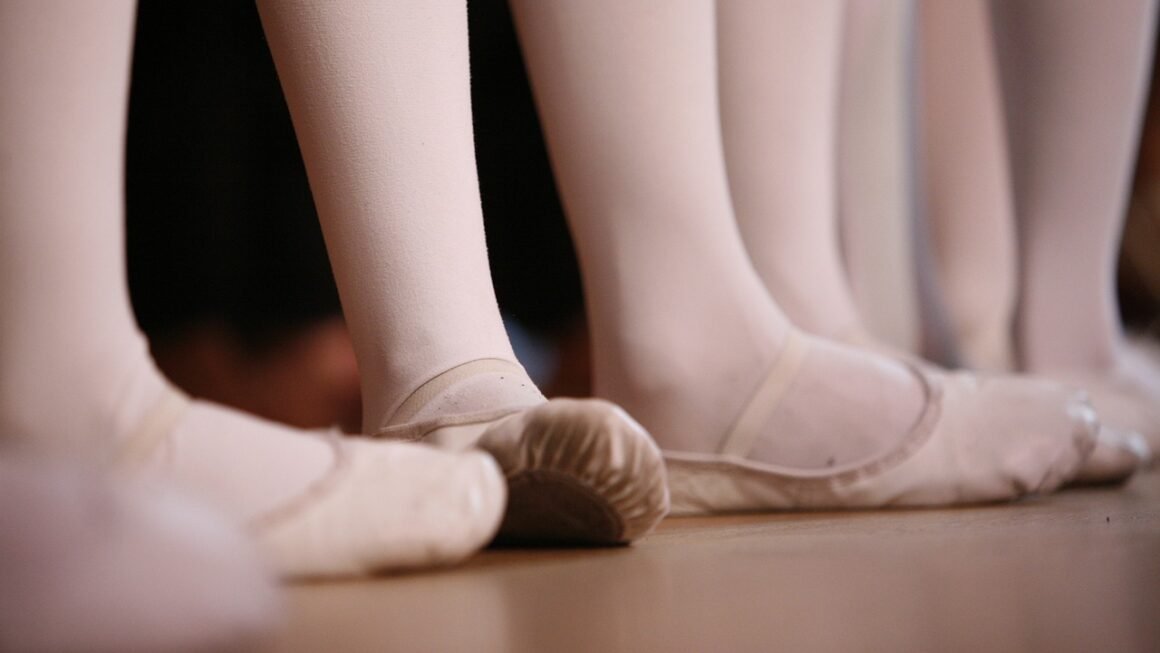Gymnastics, a captivating blend of strength, flexibility, agility, coordination, and grace, isn’t just a sport; it’s an art form performed with athleticism. From the thrilling vaults to the mesmerizing balance beam routines, gymnastics offers a spectacle of human potential. This comprehensive guide delves into the world of gymnastics, exploring its disciplines, benefits, training, and more, providing a detailed overview for enthusiasts and aspiring gymnasts alike.
The Diverse Disciplines of Gymnastics
Gymnastics encompasses several distinct disciplines, each requiring specialized skills and training. Understanding these different areas is key to appreciating the sport’s complexity and range.
Artistic Gymnastics: The Core of the Sport
Artistic gymnastics is the most well-known form and is featured prominently in the Olympic Games. It includes different events for men and women.
- Men’s Artistic Gymnastics: Comprises six events:
Floor Exercise: A display of acrobatic skills on a sprung floor. Examples include tumbling passes, handsprings, and flexibility elements.
Pommel Horse: A challenging event that demands strength, balance, and circular movements. Gymnasts must continuously move around the horse without stopping.
Rings: A test of upper body strength and control. Gymnasts perform various holds and transitions, including static positions like the iron cross.
Vault: A powerful event where gymnasts sprint towards a vaulting table and perform a complex aerial maneuver.
Parallel Bars: Demands agility, strength, and coordination. Gymnasts swing, balance, and transition between the bars.
Horizontal Bar (High Bar): A dynamic event featuring swinging, release moves, and intricate catches.
- Women’s Artistic Gymnastics: Involves four events:
Vault: Similar to the men’s vault, but often with different techniques and aerial maneuvers.
Uneven Bars: A unique event that showcases agility, strength, and swinging movements between two bars set at different heights.
Balance Beam: A challenging event that requires precision, balance, and grace on a narrow beam. Routines include leaps, turns, and acrobatic elements.
Floor Exercise: Similar to the men’s floor exercise, but often incorporates more dance elements and musical accompaniment.
Rhythmic Gymnastics: A Symphony of Movement and Apparatus
Rhythmic gymnastics is a visually stunning discipline that combines dance, flexibility, and apparatus handling. It is exclusively a women’s sport.
- Apparatus: Rhythmic gymnasts perform routines with five different apparatus:
Rope: Routines involve leaps, skips, and throws, with the rope constantly in motion.
Hoop: Gymnasts toss, roll, and manipulate the hoop around their body.
Ball: Requires delicate handling and precise throws and catches.
Clubs: Routines involve rhythmic swinging and throwing of the clubs, demanding coordination and control.
Ribbon: A flowing and graceful apparatus that creates beautiful patterns in the air.
- Key Elements: Flexibility, artistry, coordination, and musicality are essential components of rhythmic gymnastics.
Trampoline Gymnastics: Reaching New Heights
Trampoline gymnastics involves performing acrobatic skills on a trampoline, both individually and in synchronized pairs.
- Individual Trampoline: Gymnasts perform a series of ten skills, demonstrating height, control, and complexity.
- Synchronized Trampoline: Two gymnasts perform identical routines simultaneously, emphasizing synchronicity and skill.
- Double Mini-Trampoline: A hybrid of trampoline and vaulting, where gymnasts perform two skills off a smaller trampoline.
Acrobatic Gymnastics: Balancing Strength and Trust
Acrobatic gymnastics, also known as sports acrobatics, involves partnerships performing routines consisting of acrobatic moves, dance, and tumbling.
- Partnerships: Acrobatic gymnastics features various partnership combinations:
Women’s Pair: Two female gymnasts.
Men’s Pair: Two male gymnasts.
Mixed Pair: One male and one female gymnast.
Women’s Group: Three female gymnasts.
Men’s Group: Four male gymnasts.
- Key Elements: Balance, strength, flexibility, and trust are crucial for successful acrobatic gymnastics partnerships.
Benefits of Gymnastics: A Holistic Approach to Fitness
Gymnastics offers a wide range of physical and mental benefits, making it a valuable activity for individuals of all ages.
Physical Advantages
- Improved Strength: Gymnastics develops both upper and lower body strength through bodyweight exercises and specialized training.
- Enhanced Flexibility: Gymnastics requires a high degree of flexibility, which is achieved through stretching and conditioning exercises.
- Increased Coordination: Gymnastics improves coordination, balance, and body awareness.
- Cardiovascular Health: While not primarily a cardiovascular sport, gymnastics can contribute to overall cardiovascular health through dynamic movements and training.
- Bone Density: The impact of gymnastics exercises helps to increase bone density, reducing the risk of osteoporosis.
Mental and Emotional Advantages
- Discipline and Focus: Gymnastics requires discipline and focus, which can translate into other areas of life.
- Confidence Building: Mastering new skills and overcoming challenges in gymnastics can boost confidence.
- Mental Toughness: Gymnastics helps develop mental toughness and resilience in the face of adversity.
- Problem-Solving Skills: Gymnasts learn to analyze and solve problems creatively in their routines.
- Teamwork (in some disciplines): Team gymnastics, such as acrobatic gymnastics, fosters teamwork and collaboration.
Social Advantages
- Friendship and Socialization: Gymnastics provides opportunities to make friends and socialize with like-minded individuals.
- Teamwork (in some disciplines): Team gymnastics fosters teamwork and collaboration.
- Learning sportsmanship: Gymnasts learn to win graciously and lose with dignity, developing essential social skills.
Training and Safety in Gymnastics
Gymnastics training is rigorous and requires a structured approach to ensure safety and progress.
Importance of Qualified Coaches
- Expert Guidance: Qualified coaches provide expert guidance, ensuring proper technique and preventing injuries.
- Structured Training Plans: Coaches develop structured training plans tailored to the gymnast’s skill level and goals.
- Safety Protocols: Coaches enforce strict safety protocols to minimize the risk of injury.
Proper Warm-Up and Cool-Down
- Warm-Up: A proper warm-up prepares the body for exercise, increasing blood flow to the muscles and improving flexibility.
- Cool-Down: A cool-down helps the body recover after exercise, reducing muscle soreness and preventing injuries.
Progressive Skill Development
- Gradual Progression: Gymnasts should progress gradually, mastering basic skills before attempting more advanced techniques.
- Spotting: Spotting is crucial for learning new skills, providing support and preventing falls.
- Conditioning: Regular conditioning exercises help build strength, flexibility, and endurance.
Safety Equipment and Facility Maintenance
- Mats and Padding: Proper mats and padding should be used to cushion falls and reduce the risk of injury.
- Equipment Inspection: Gymnastics equipment should be regularly inspected and maintained to ensure safety.
- Safe Training Environment: A clean and well-maintained training environment is essential for preventing accidents.
Getting Started in Gymnastics: A Beginner’s Guide
Starting gymnastics can be an exciting journey. Here’s a guide for beginners:
Finding a Reputable Gymnastics Club
- Research: Research local gymnastics clubs and read reviews online.
- Visit: Visit the club and observe a class to see if it’s a good fit.
- Talk to Coaches: Talk to the coaches and ask about their experience and training philosophy.
- Check Credentials: Ensure the coaches are certified and have experience working with beginners.
Essential Equipment and Attire
- Leotard (for girls): A comfortable and form-fitting leotard is essential for gymnastics.
- Gymnastics Shorts (for boys): Gymnastics shorts or tights provide freedom of movement.
- Bare Feet: Gymnastics is typically performed barefoot to improve grip and balance.
- Hair Ties: Long hair should be tied back to prevent it from obstructing vision.
Basic Skills to Learn
- Forward Rolls: A fundamental skill that teaches body control and coordination.
- Backward Rolls: Another essential skill that develops backward movement skills.
- Handstands: A foundational skill that builds upper body strength and balance.
- Cartwheels: A basic gymnastic skill that teaches lateral movement and coordination.
- Basic Jumps and Leaps: Essential for floor exercise and balance beam routines.
Conclusion
Gymnastics is a demanding yet rewarding sport that offers a multitude of physical, mental, and emotional benefits. Whether you’re an aspiring gymnast, a parent considering enrolling your child, or simply a sports enthusiast, understanding the diverse disciplines, training requirements, and benefits of gymnastics can enhance your appreciation for this incredible art form. With proper training, qualified coaching, and a commitment to safety, anyone can experience the joy and fulfillment that gymnastics has to offer. Take the leap and explore the world of gymnastics – you might just discover a hidden talent or a lifelong passion!



